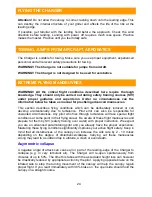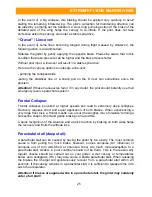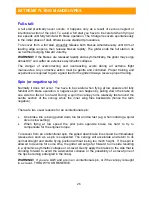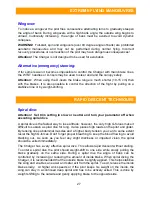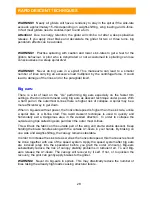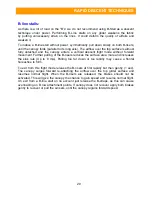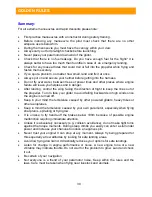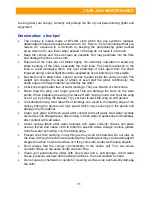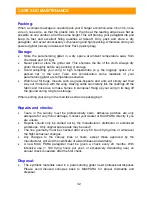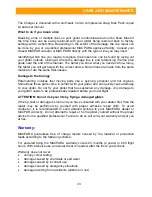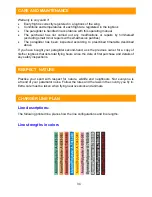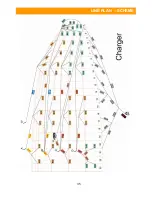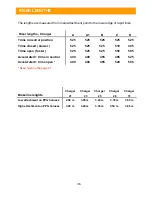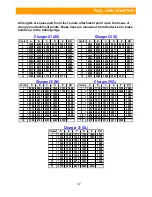
24
FLYING THE CHARGER
Attention!
Do not allow the canopy to come crashing down onto the leading edge. This
can destroy the internal structure of your glider and affects the life of the ribs at the
leading edge.
If possible, get familiar with the landing field before the approach. Check the wind
direction before landing. Landing with power off requires much less space. Practice
makes the master. Practice until you feel totally safe.
TOWING, JUMPS FROM AIRCRAFT, AEROBATICS
The Charger is suitable for towing. Make sure you use proper equipment, experienced
personnel and all relevant safety precautions for towing.
WARNING!! The Charger is not suitable for jumps from aircraft.
WARNING!! The Charger is not designed to be used for aerobatics.
EXTREME FLYING MANOEUVRES
WARNING!! All the critical flight conditions described here require thorough
knowledge. They should only be carried out during safety training courses (SIV)
under proper guidance and supervision
.
Under no circumstances can the
information below be taken as manual for practising advanced manoeuvres.
This section describes flying conditions which can be deliberately induced or can
develop unintentionally due to turbulence. Pilot error can also be responsible for
unwanted circumstances. Any pilot who flies through turbulence will face special flight
conditions at some point in their flying career. Be aware of these flight manoeuvres and
prepare for them by SIV (safety training over water) with proper instruction. We expect
you are an advanced paramotoring pilot and you already have the proper experience.
Mastering these flying conditions significantly improves your active flight safety. Keep in
mind that all disturbances of the canopy can increase the sink rate by 2 - 10 m/sec
depending on the degree of disturbance/collapse. Carrying out these manoeuvres
wrong may lead to a sudden drop in altitude, a crash or even death.
Asymmetric collapse
A negative angle of attack can cause all or part of the leading-edge of the Charger to
collapse (e.g. in very turbulent air). The Charger will re-open spontaneously from
closures of up to 50%. The time this takes with the associated height loss can however
be drastically reduced by appropriate action by the pilot. Applying opposite brake on the
inflated side to stop the turning movement of the canopy will help the canopy regain
proper flight. If you react immediately with 30% brake on, the open side should hold the
canopy on a straight course.
Summary of Contents for CHARGER
Page 1: ...1 ...
Page 10: ...10 TRIMMING ...
Page 35: ...35 LINE PLAN SCHEME ...
Page 38: ...38 ...
Page 40: ...40 ...















